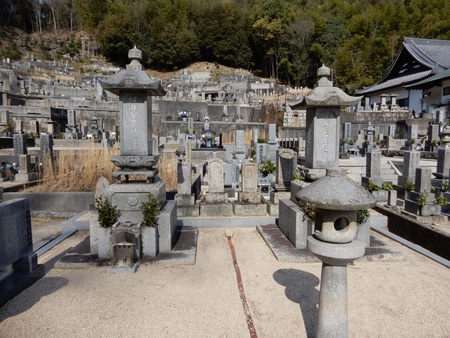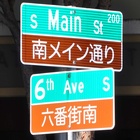Before the war, Japanese immigrants to America were generally employed as laborers in states on the West Coast. However, looking across the country, there were also rare cases of Japanese immigrants who were self-employed, such as in the form of settlement businesses.
One of these was the Yamato Colony, established in southern Florida at the beginning of the 20th century, but looking at states individually, the most active settlement project was in Texas, also in the south.
Before the Russo-Japanese War, Consul General of New York, Sadatsugu Uchida, publicized the future prospects of rice cultivation in Texas through official gazettes and other means, encouraging Japanese settlers to move there. This was also covered in Japanese immigration magazines, and Japanese entrepreneurial capitalists and intellectuals flocked to the vast state of Texas one after another. Over the course of a few years from 1930, more than 50 Japanese-run farms were established in Texas.
The best known of these ventures is the farm run by Nishihara Seito and his son Nishihara Seiaki in Webster, south of Houston. Also, about 100 kilometers east of Houston, Kishi Yoshimatsu, originally from Nagaoka, Niigata Prefecture, established the Kishi Colony.
About 10 years after Nishihara Farm and Kishi Colony, a colony by Japanese people was established near the mouth of the Rio Grande River, which flows close to the border with Mexico. This was a farm in Brownsville, a bayside town, that was jointly run by seven people led by Minoru Kawabata, a native of Kagoshima Prefecture.
The seven men bought a farm that had already been developed as a sugar cane plantation, employed 50 to 70 workers, and cultivated beans, potatoes, and tomatoes. However, due to the effects of the recession after World War I and the poor quality of the land, the business was dissolved after only three years.
After that, the seven of them all became independent, but Kawabata was successful in continuing to transport agricultural products and grow vegetables and cotton.In addition to his business, he also contributed to the local area by building a church, earning him the respect of the community.
To Fukuyama City, Hiroshima Prefecture
In July 2013, I visited the remains of the former Japanese colony and plantations in Texas and met the descendants of those involved. Among them was Randall (Randy) Sakai, a relative of Minoru Kawabata. Randy met me at Hidalgo Airport near the Mexican border and introduced me to the remains of the former Yamato Colony plantations and the Japanese people who remain in the area.
A few years later, Randy contacted me, wanting to know more about his paternal roots. Randy lives in Austin, Texas, and is the son of Kawabata Minoru's second daughter Rose and Yutaka Sakai. Randy wanted to research the roots of his father's Sakai family.
Randy first sent me a copy of a document written in Japanese. It was a copy of a document called a "Homyochō," which lists the posthumous Buddhist names of successive generations of the Sakai family. Along with the family register, this is a valuable clue to understanding family lineage in Japan, and contains names, dates of death, posthumous Buddhist names, and family relationships with the head of the household.
The oldest record was for an ancestor who died in 1733. I translated as many of these as I could into Roman letters and Arabic numerals, added explanations, and sent them to Randy.
Through my conversation with Randy, I decided to go to Fukuyama City, Hiroshima Prefecture, where Randy's grandfather was from, to obtain a copy of his family register and visit his ancestors' grave. Yohei Sakai was the first member of the Sakai family to move to America.
How can I obtain the family register necessary to represent Randy? I inquired at Fukuyama City Hall in advance, and was told that I needed a power of attorney written by Randy and his and his father's birth certificates. A signed power of attorney attached to an email and printed out in Japan was not acceptable; it had to be a handwritten power of attorney.
So I mailed a blank power of attorney in Japanese to Randy in Texas, had him sign it, and had him send it to me along with the birth certificate.
In March 2020, while visiting Hiroshima for an interview, I took the opportunity to travel to Fukuyama and visit the family registry department at Fukuyama City Hall. Luckily, Randy's relative, Sakai Takao, lives in Fukuyama, so accompanied by Takao, I applied for a certified copy of Yohei's grandfather's family registry on Randy's behalf. After a while, the registry clerk checked Yohei's records, presented the certified copy to us, and carefully explained how to read it. The certified copy included entries up to the generation of Yohei's father.
Visiting the family temple
The day after getting the family register, Takao drove me to An'yo-ji Temple, a Shingon Buddhist temple located about 30 minutes northwest of the city. This is the family temple of the Sakai family. In one section of the cemetery on the hill, there were several old gravestones of the Sakai family lined up.
Some of the gravestones have had their corners rounded off so that the carved letters are no longer legible, but apart from these, there were two splendid gravestones lined up in a large area. One of them was the grave of Randy's grandfather, Yohei Sakai, and the other was the grave of Takao's grandfather.
Considering that it was built in 1933, it is likely that Yohei had it built in preparation for the future when he returned to Japan from the United States. He probably intended to be buried in his hometown at the end. However, this did not seem to be the case.
Next we headed to Saikyo-ji temple, about 6-7km south of Anyoji. The Sakai family's original family temple was Saikyo-ji, but when they moved at some point, they moved their graves to Anyoji. Saikyo-ji is Jodo Shinshu, so I wondered if there was any problem with moving to Anyoji, which is Shingon, but the head priest of Anyoji said that as a local temple, it accepted graves of other sects.
At Saikyo-ji Temple, I asked the head priest another question. It was about posthumous Buddhist names. There are no posthumous Buddhist names in the Jodo Shinshu sect, and the Sakai family was originally Jodo Shinshu, so the deceased should not have had posthumous Buddhist names. However, all the deceased in the posthumous Buddhist name register that Randy had had posthumous Buddhist names.
According to the head priest of Saikyo-ji Temple, in the area from the west of Okayama (Bicchu) to Hiroshima, even Jodo Shinshu Buddhists would give posthumous names. People wanted posthumous names as a value.
After completing our two-day journey into Randy's roots, I sent him an English translation of the family register, as well as photos of the Sakai family grave and family temple.
(Titles omitted)
© 2022 Ryusuke Kawai







